First Pages of Best-Selling Novels: Flight Behavior
This week, in our examination of first pages of best-selling novels, we’re taking a look at Barbara Kingsolver’s novel Flight Behavior (2012). We’re using my first-page checklist to go through an author’s first page to see why it effectively draws the reader quickly into the story. While novels don’t have to have every one of these checklist elements on the first page, usually the more they do have, the stronger the opening. )If you missed last week’s exploration, click here.)
Of course, the plot and premise of a novel is going to come into play here. Genre also influences what kind of opening scene will work best for a story. While there are a lot of ways an author might begin, regardless of genre, plot, and premise, opening pages need to grab readers’ attention and keep them reading.
If you followed Live Write Thrive all last year, you learned a lot about the fatal flaws of fiction writing. So many of those flaws show up on first pages (backstory dumps, nothing happening, POV violations, faulty dialogue, and much more), so in addition to studying great novels to see how to craft powerful opening pages, it’s a big help to be in the know about these flaws and how to remedy them. Be sure to get your copy of 5 Editors Tackle the 12 Fatal Flaws of Fiction Writing, as the book is packed full of more than sixty before and after passages to help you master this.
So let’s dive into Kingsolver’s first page. She’s one of my favorite authors, and she’s a talented wordsmith. Flight Behavior is categorized as Women’s Fiction, but her books are also easy to put in the Literary Fiction category.
1
The Measure of a Man
A certain feeling comes from throwing your good life away, and it is one part rapture. Or so it seemed for now, to a woman with flame-colored hair who marched uphill to meet her demise. Innocence was no part of this. She knew her own recklessness and marveled, really, at how one hard little flint of thrill could outweigh the pillowy, suffocating aftermath of a long disgrace. The shame and loss would infect her children too, that was the worst of it, in a town where everyone knew them. Even the teenage cashiers at the grocery would take an edge with her after this, clicking painted fingernails on the counter while she wrote her check, eyeing the oatmeal and frozen peas of an unhinged family and exchanging looks with the bag boy: She’s that one. How they admired their own steadfast lives. Right up to the day when hope in all its versions went out of stock, including the crummy discount brands, and the heart had just one instruction left: run. Like a hunted animal, or a racehorse, winning or losing felt exactly alike at this stage, with the same coursing of blood and shortness of breath She smoked too much, that was another mortification to throw in with the others. But she had cast her lot. Plenty of people took this way out, looking future damage in the eye and naming it something else. Now it was her turn. She could claim the tightness in her chest and call it bliss, rather than the same breathlessness she could be feeling at home right now while toting a heavy laundry basket, behaving like a sensible mother of two.
The children were with her mother-in-law. She’d dropped off those babies this morning on barely sufficient grounds, and it might just kill her to dwell on that now. Their little faces turned up to her like the round hearts of two daisies: She loves me, loves me not. All those hopes placed in such a precarious vessel. Realistically, the family could be totaled. That was the word, like a wrecked car wrapped around a telephone pole, no salvageable parts. No husband worth having is going to forgive adultery if it comes to that. And still she felt pulled up this incline by the hand whose touch might bring down all she knew. Maybe she even craved the collapse, with an appetite larger than sense.
Why This Works
So let’s go through the checklist elements and take a look at how this first page measures up.
Opening Hook: Clever writing and image that grabs the reader. The first and second sentence hook the reader with their descriptive language and the revelation that someone is throwing her life away and meeting her demise. Why? We’re compelled to continue reading.
Introduction of main character in first few lines: The story, written in third person, begins in the deep POV of the protagonist. In the first paragraph we learn she is a “sensible mother of two” but isn’t behaving like one. Instead, she is throwing away her “good life” for something unnamed, but hinted at—“one hard little flint of thrill.” The author reveals details that paint a picture of the protagonist as a small-town woman who smokes too much, will be gossiped about, and shamed. We sense her determination, yet bitterness, at the lot she’s about to cast.
Starting the story in the middle of something that’s happened (or happening): The author gives readers just enough information to hook them—we enter the story as the woman is “marching uphill to meet her demise.” Through the character’s reflections, we learn she’s about to make a “reckless” choice that will lead to shame and loss.
A nod to setting; avoid excessive exposition or narrative: Yes, but rather than describing the setting, she shows it through description of the people in a town where everyone is known. “Teenage cashiers at the grocery . . . clicking painted nails on the counter . . . eyeing her unhinged family.” The protagonist considers how the townspeople “admire their own steadfast lives.” The sense the author conveys is that the protagonist is judging the very people who she believes will judge her. Again, there’s a steely determination in the character’s choice to fall.
A catalyst, inciting incident, or complication introduced for your character: Her disdain for the life she has is the complication she faces. The choice she’s about to make will become the inciting incident, it seems.
A hint at character’s immediate intentions: In the second paragraph, the reader learns the woman is about to commit adultery—to knowingly, she believes, destroy her family by the choice she’s making. We get further insight into the woman’s character when she considers her “babies” and then can’t let herself dwell on them.
A hint at character’s hidden need, desire, goal, dream, fear: She is looking for a momentary thrill—an escape, perhaps. A moment of bliss in an otherwise dreary life.
Unique voice/writing style: This is quintessential Barbara Kingsolver—she is a master at creating deep, layered characters with unique voices. Without ever naming an emotion, she shows exactly what the character is feeling through simile and metaphor.
Setting the tone for the book: Definitely. The character seems to be escaping a sense of entrapment, but hides her need behind an attitude of disdain—threads that run through the story.
A glimpse at character’s personal history, personality—shed light on motivation: Again, escaping her life. She is making her choice based on desire rather than sense. We’re not given a sense of her history on the first page, except the idea that she’s a bored/troubled housewife and mother.
Hint of character’s initial plot goal: Nothing beyond the choice she’s about to make.
A course of action/decision implied. Introduction of high stakes/dramatic tension: Adultery.
Good Pacing: jump right into present action. No backstory: Slow, literary pace. Yet, the stakes are high. Interesting contrast.
- One characteristic to reveal that makes your character heroic and vulnerable: We see the vulnerability in this character but nothing heroic yet. She isn’t unlikable, but instead a character who we hope will be redeemed.
- One element of mystery, something hinted at that raises curiosity: Why is she so desperate for a thrill or escape?
- One element out of the ordinary, unusual, that makes the book different/stand out: The absolute willingness to throw her life away makes this character/story (so far) unique. It’s the opposite of what we expect of a mother, which then piques curiosity.
- Concise, catchy dialogue (if in the first scene) that is not boring or predictable: No dialogue.
- A hint at theme: Possibly a theme of loss or death. The character is willing to throw away her life—possibly a metaphor for something larger?
What Could Have Been Better
It’s hard for me to find fault with anything Kingsolver writes, and these suggestions of “better” are, for the most part, a matter of taste. Keep in mind, this is really a literary style. What does that mean? Literary fiction is more about the writing and the effect of the writing than on structure and commercial “rules” of fiction writing. Readers of this genre aren’t expecting the same kind of fast, right-into-action, and dialogue-heavy openings.
That said, even with literary fiction, I prefer reading shorter paragraphs. She has a wonderful run-on kind of narrative going, and clearly this doesn’t leave room for early dialogue, although she could have put in snippets of what some in the town said in addition to the one bit: “She’s that one.” For me, I would be able to read the page better with more, shorter paragraphs. But the run-on style also fits her character’s scattered thoughts.
I found the first line a bit awkward. Shifting from there into third person made me have to reread a few times. That first line implies a first-person narrator, so the following line about the woman with red hair made me pause to figure out if the narrator was talking about someone else or herself. Then I realized as I read on that this is all third person. Did you find that awkward?
I felt some of the lines weren’t needed or didn’t fit. Such as “How they admired their own steadfast lives. Right up to the day when hope in all its versions went out of stock, including the crummy discount brands, and the heart had just one instruction left: run.” She is commenting on others’ lives, so the next line implies it’s their hope that will run out, and they’ll run—when it is she who has run out of hope and is running. Just a bit confusing to read there. And regardless of style or genre—even with stream-of-consciousness-type narrative (which I love)—every word and phrase should flow clearly and smoothly in the narrative and not hitch up the reader.
There’s a danger when writing with a literary style to lapse into “writer-ese.” This is writing that feels forced and instead of in POV seems to be the author’s attempt at sounding clever. Or literary. This is a problem for me when I write literary novels.
I also found the shifts in tenses jarring. She uses past tense, but then we get “No husband worth having is going to forgive adultery if it comes to that.” I also wondered who was pulling her uphill: “And still she felt pulled up this incline by the hand whose touch might bring down all she knew.” She’s marching uphill (no one is pulling her hand), so it’s implying she’s pulling her own hand? And “might bring down all she knew” is a bit weak to me. Vague. Referring to her own hand destroying her family? I prefer to see phrases like “all she knew” (which is a bit of hyperbole, but it’s okay if it’s the character’s POV and way she thinks) defined a little more clearly.
So these are minor nit-picky things, though. Overall, the first page does what it needs to, as we’ve covered above with the checklist. Readers who love Kingsolver’s writing are getting what they’d expect, and they won’t be disappointed by this first page.
What are your thoughts? Anything you don’t like? What stands out strong to you?
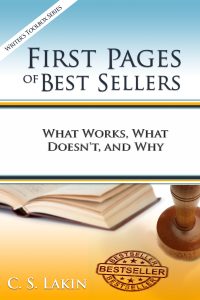 Want to read all the analyses of best-seller first pages on Live Write Thrive?
Want to read all the analyses of best-seller first pages on Live Write Thrive?
Get the compiled collection of posts, along with additional insights and instruction that will help your first pages rock!
First Pages of Best Sellers: What Works, What Doesn’t, and Why is available in Kindle ebook and paperback! Get yours HERE!

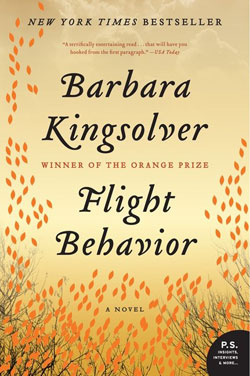
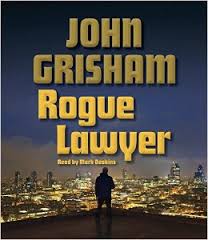
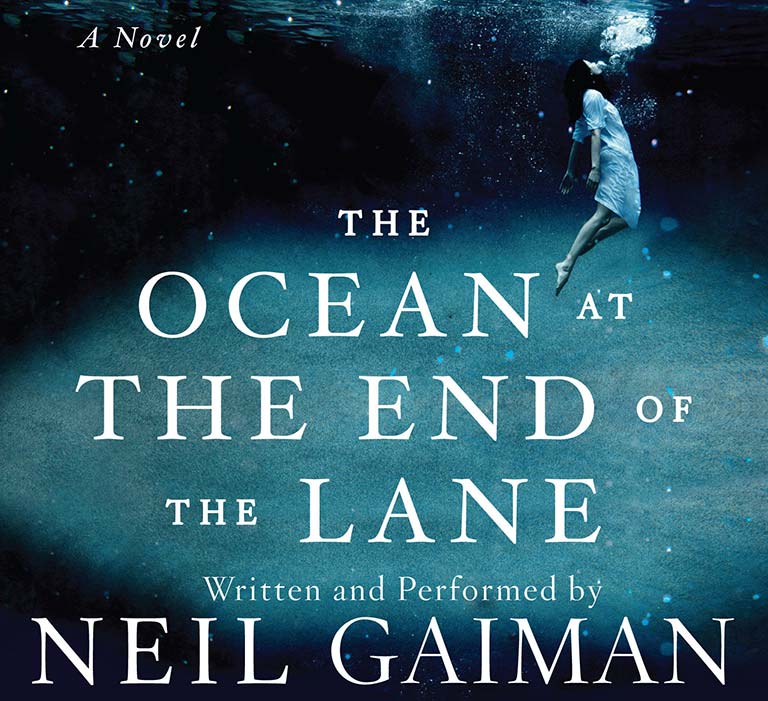



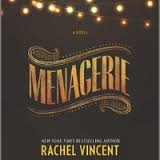




I enjoy your use of successful novels as teaching tools. A wonderful reality check. I don’t react as positively to the deep third person POV. It seemed a very distant way to begin what is probably a very good story. Like you, the monster paragraphs were daunting. I am with you on the awkward opening line. Gee, you’d almost think you’ve edited a couple of my books, and I soaked up some of your wisdom along the way! That said, I suspect my issue is with the literary fiction genre, not with the author’s skill set. This sort of genre is very challenging in the marketplace right now, especially for unknown authors who are hoping to sell their first Susanne-edited novels to a major house. ps love the new look for your site. Dennis
Thanks, Dennis! This is a common thing with literary genre, and publishers love to tout the novels that break the recommended “rules” as terrific. Just take a look at many of the Pulitzer winners. So many of them I can hardly stand reading. I wonder sometimes if it’s a case of the emperor’s new clothes. Those in publishing point in awe at the novel that is so amazing, while many of us readers are scratching our heads wondering why they can’t see how awful the book is. I couldn’t get through even two chapters of “All the Light We Cannot See.” All narrative and boring. Yet touted as a masterpiece. Same with The Goldfinch, which got tedious to me about halfway through. It’s hard to plow ahead aiming for a publishing contract when novels like this line the shelves.
I guess one writer’s “Love this!” is another’s “Ick.” If I cracked open a book and the story started with such a solid slug of internalizing, I’d shut it again. Maybe I need dialogue or action to draw me into the story.
I definitely agree with you about paragraphs. In this respect, I’d like to see the writer lead with the opening four sentences, then start on Paragraph two. Leave the surmising about what others would say until later. (Her family would normally be placed ahead of local gossips, anyway.)
As to the the switch in POV right off the bat, I see the first sentence as a hypothetical thought thrown out, so it doesn’t bother me, but I might do it as a paragraph all its own to indicate the change. Or do the story in first person.
IMHO, a first impression of the MC as so into herself would put me off. Being “pulled by an invisible hand” gives the impression of spineless. Her choice of “I’m about to blow my marriage and family apart for my own bit of pleasure. I won’t care what happens to anyone else. Too bad–can’t help it.” Big Ick.
Not knowing where the story goes from here, I’d respect her a lot more if she comes to her senses before she gets to the top of the hill. Or maybe she finds out one of his past lovers murdered him before she got there. I’d definitely read the back cover & reviews before buying this one.
Thanks for those thoughts. I agree that too much of any one thing (internalizing, dialogue, narrative) can be too much. A lot of popular best sellers, though, are rife with long narrative passages, even on the opening pages. It’s also hard to like or empathize with a character who doesn’t seem to have any redeeming qualities. This is why I urge so strongly in many of my posts and books that writers find ways to make their character empathetic, with some glimpse of greatness or honor or kindness or some potential. Dark protagonists are popular these days, but if you don’t show that potential to change or a desire to change (an unhappiness with who they are), then they are just unlikable or pitiable.
Your article inspired me to check out this book on Amazon, read the blurb & reviews. Definitely got more of a feel for the character and her setting than what comes across in these two paragraphs. The novel does sound like a fully fleshed out human interest story.
I enjoy literary novels if they’re well written, so I can’t claim that as a reason to dislike this opening page.
But I do dislike and wouldn’t read the next page.It was difficult enough to get to the end of the first page.
What didn’t work for me:
~ Long paragraphs
~ Long sentences
~ Nothing likable about the lead character
~ Convoluted writing
~ Overarching sense of hopeless fatalism
About the only thing I did like was the opening line. It all went downhill after that.
I suppose a lot of my personal dislike for this novel was that I’m a melancholy person by nature and do not need fiction to re-enforce the sense of hopelessness with which I often struggle. No author could know that in advance, so this point is more about the reader than the writer.
Speaking as a (very) inexperienced writer, more a reader than a writer, I have to say “Flight Path” grabbed my attention. Barbara Kingsolver(s) characters are always on the run – plotting escapes – (while in diners, broken down cars, or “super” markets). I’m hooked. Makes me crave road trip food!
I’ve read this book and loved it. I never thought the hand pulling her uphill was hers but rather the unseen person waiting for her. I always like reading literary but struggle to write it. I’m looking forward to this series. Thanks
I think this series is exactly what I’m looking for. I haven’t been able to pin down how to fix my current WIP, but this shines a light on issues that need attention. On the positive side,I’m able to check off a few points in the “did that” column.
I didn’t like the switch in POV, either. The opening line feels like she’s going after the “it is a truth universally known…” type of super memorable opener. The tactic can be effective if the effort fits into the narrative, but the switch in POV makes the text feel underscored and italicized.
Agree with the above commentary, but what a great example you made of covering the checklist. Provoked me into reviewing my current opener and modifying it–without changing genre, voice or style–to get most of those points down. Invaluable learning experience.
The Kingsolver excerpt is 400 words, so in my first 400 or so I tried to include as much as possible. Most of the checklist items were already in place but required stronger, terser (is that a word?) treatment. Several checks were missing and I was able to add them to my own satisfaction by using the extant material. Surprising how powerful that becomes.
The point of all this to me was applying your checklist lesson using a respected author’s work as an example. That speaks volumes to your gift of showing what’s critical and how it MIGHT be done in concrete terms.
Well done.
Thank you! I use that checklist at conferences for one-on-one first-page critiques, and writers seem to find it very handy. I also use it in depth in Writing the Heart of Your Story, if you need further insights into first-page construction.
I agreed about the awkwardness with the first lines. First we’re in her POV. Then we’re shifted out of it to look upon her red hair from the outside. Then we slide back into her POV.
I disagreed, however, about anything amiss with the “how they admire their own steadfast lives” lines. She is saying they still admire their steadfast lives because they haven’t yet reached the point she has. I actually liked this part because it seemed like the sort of things we really think to ourselves: oh those people think they’re so perfect but they just haven’t been in my shoes but once they are then they will see…!
Oops. I didn’t mean to hit post yet. I wanted to also say: thank you for this series on first pages. It’s very helpful.
Sarah
I appreciate the comments! I’m just pointing out things that snag me up as a reader (and editor). They might be nonissues for others. But it’s fun to go through these first pages and examine them under the microscope!